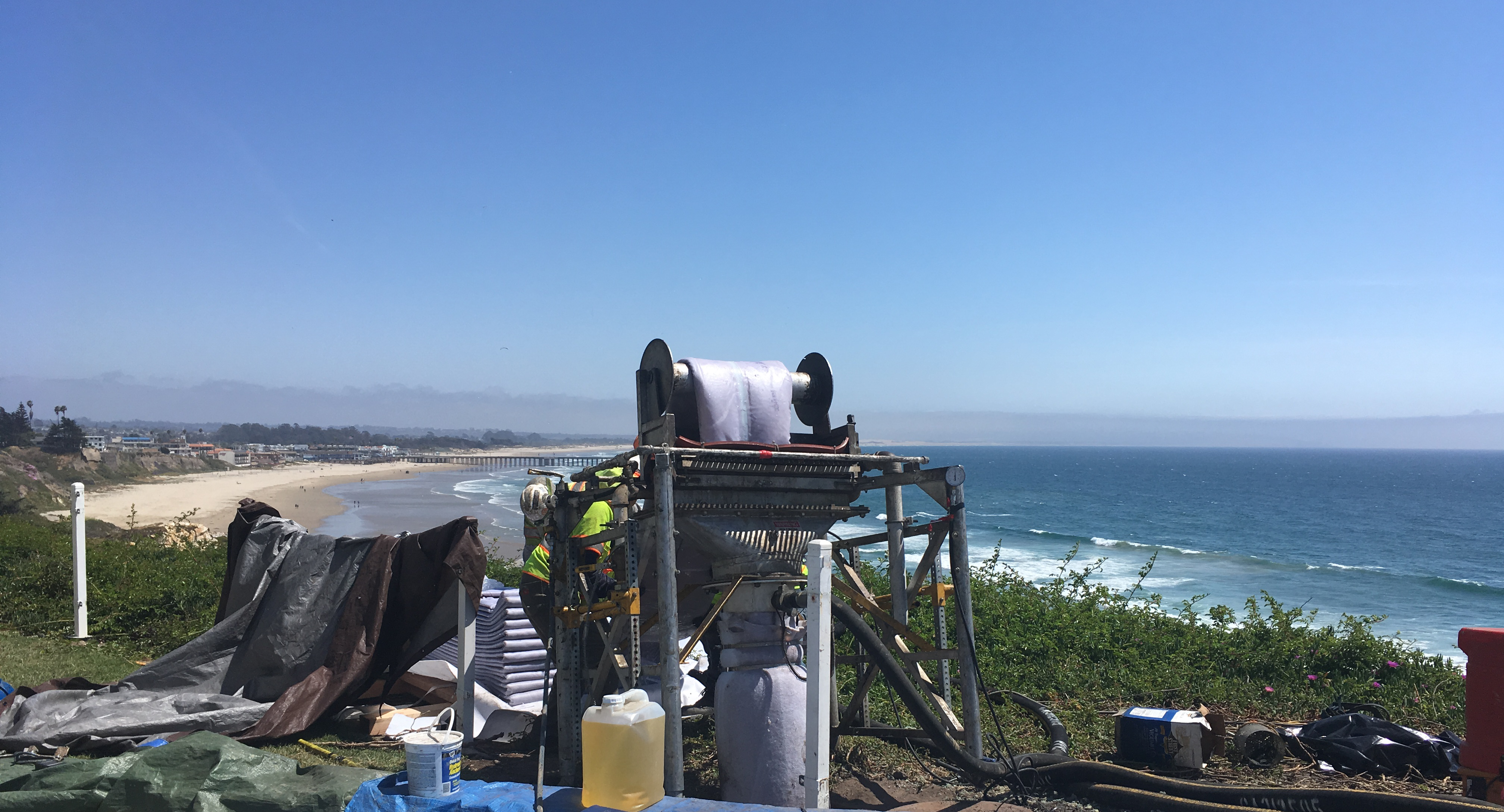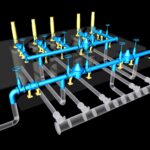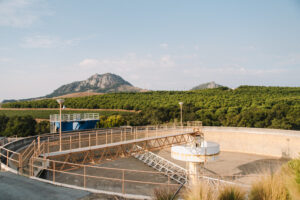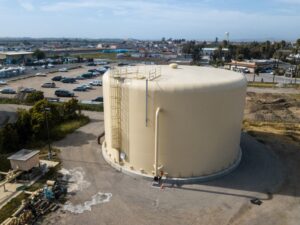
Cured in Place Pipe (CIPP) is a trenchless rehabilitation method used for existing and often hard to reach pipelines. It creates a jointless, seamless lining within an existing pipe by inserting a liner material coated with resin. CIPP liners range in size from 4 to 120 inches and are flexible enough to accommodate minor bends and small changes in pipe diameter.
CIPP also has a lower impact on the environment and can be up to 60% less expensive than traditional rehabilitation methods (open trench replacement), making it the popular choice when doing water and wastewater pipeline repair.
Safety
Even with trenchless rehabilitation methods like CIPP, it is critical to engage the Owner and local municipalities early to review the preliminary project plans and discuss potential impacts and safety concerns.
To reduce impacts in high-traffic areas, night work may be considered.
Bypass
Installation of CIPP requires rerouting the wastewater from the damaged pipeline through a sewer bypass, which can sometimes be challenging.
In some larger systems, it may be possible to plug the pipeline and have the wastewater back up and flow into an alternate route. However, temporary bypass pumping systems are typically required to manage the wastewater flow and route wastewater around the work area during the CIPP installation. Traffic ramps or shallow burying of temporary pipes and steel plates can be used to protect the bypass system piping and avoid traffic impacts when crossing through intersections or across driveways.
Liner Types
CIPP liners are made of concentrically sewn layers of material, either non-woven polyester needle felt, glass fiber, or a combination of woven felt and fiberglass.
Felt lining is typically the least expensive liner, but it requires the most resin to fully cure and has a lower strength and corrosion resistance. The reduced corrosion resistance is only a factor when the pipeline conveys fluids other than normal water or wastewater. Balancing cost, strength, and corrosion resistance felt lining is the most cost-effective choice for wastewater pipes.
Glass fiber lining is stronger and usually thinner than felt, as well as more resistant to corrosion, making it the ideal choice for pressurized potable water mains.
Resins
There are two main classes of resins used for CIPP, styrene and styrene-free.
Styrene has been the “go-to” resin for the last 50 years. It is water-insoluble, made from ethylene and benzene, and can be made into either polyester or vinyl ester resins.
Styrene is naturally occurring (found in strawberries and cinnamon), dissipates quickly, and readily undergoes polymerization. While styrene is biodegradable in the presence of water, humans are sensitive to its bad small in concentrations as low as 1-0.5 ppm and it has been classified as a carcinogen. The highest potential for exposure to styrene is when unloading the liner from the truck and when using the steam curing method. Styrene is colorless, oily, volatile, and flammable. The use of proper Personal Protective Equipment for the installation is recommended with styrene-based resins. In December of 2017 National Association of Sewer Service Companies published the “Guideline for the Safe Use and Handling of Styrene Based Resins in Cured-in-Place Pipe (CIPP)”
Styrene-free resins are becoming the new resin of choice because they are non-carcinogenic. These resins are made of either reactive monomers or epoxy. Non-styrene resins range from 1.5 to 4 times more expensive than the styrene equivalent.
- Reactive Monomer liners produce low odor, but still have VOC’s emissions, reduced mechanical properties, reduced corrosion properties, a longer cure time, stability issues, some issues with water conveyance, and temperature stability issues (more so than styrene).
- Epoxy resins are difficult to mix. Epoxy resins have a shrinkage of approximately 3% versus the polyester and vinyl ester resins shrinkage of 6-7%. Epoxy resins are odorless and remains stable for only 8 hours, making timing the installation more critical than timing the installation of polyester and vinyl ester, which are stable for 48 hours.
A styrene-based resin is recommended if proper controls are in place for worker and environmental protection. The Epoxy resins are an acceptable substitution for styrene-based resins if cost in not as important as the environmental concerns. Both resins are appropriate for sewer and water pipe repair.
Cure Methods
The original method for curing CIPP was hot water sent back and forth between two boilers at either end of the pipe alignment. This method works for large and small pipelines, but larger sections of pipe take longer to heat up the water and cure the lining. It is the slowest of the methods, but it does help with stabilizing the curing process.
Steam is another, faster curing method for CIPP. The pressure and heat of steam inflates the liner, pushing it into the pipe walls as it cures. Unfortunately, this method is susceptible to fluctuations in temperature, meaning curing may not go as smoothly.
The newest curing method for CIPP is UV light, and it also works with fiberglass liners. This method uses air pressure to shape the liner before rolling a UV light train and camera through the pipe to cure it. Using an engineered polymeric film to serve as a styrene barrier UV light curing has lower emissions. The UV curing also uses much less energy to cure because it does not rely on heat from steam or hot water. The UV cure method has the least emissions and energy impact out of the three options.
When not to use CIPP
While CIPP is a versatile tool, it is not the best solution for every type of pipe repair. Pipe systems with sags, offsets, crushed sections, elevated temperatures, or significant changes (40% or more) in pipe diameter are not candidates for CIPP.







